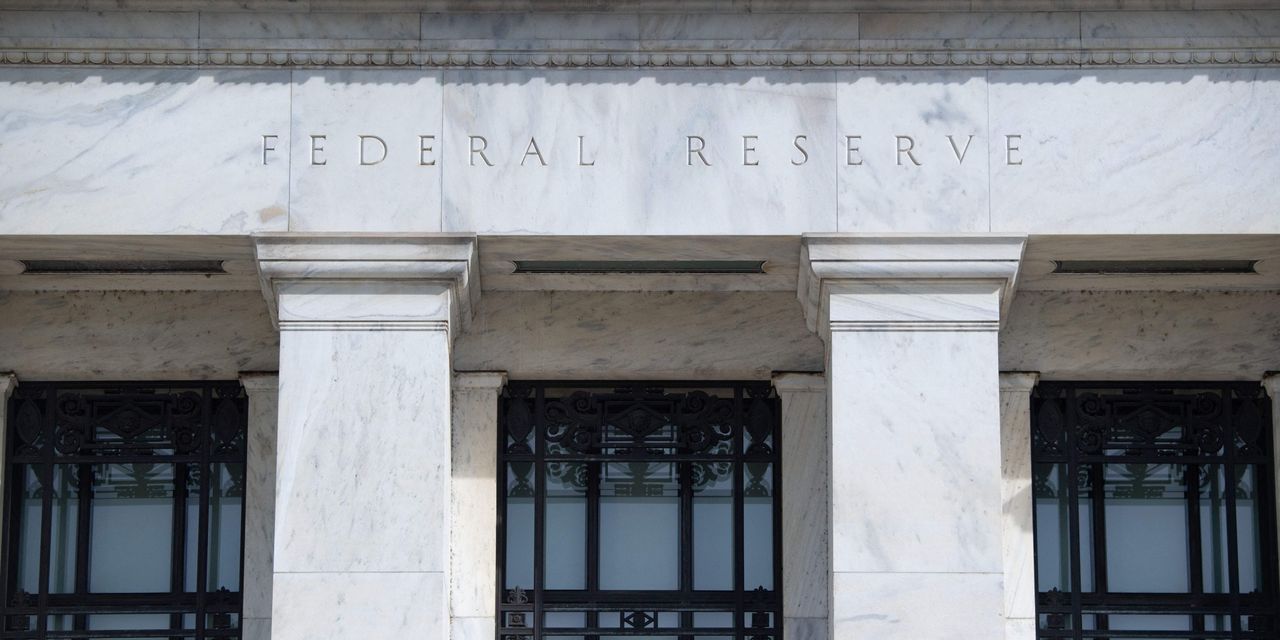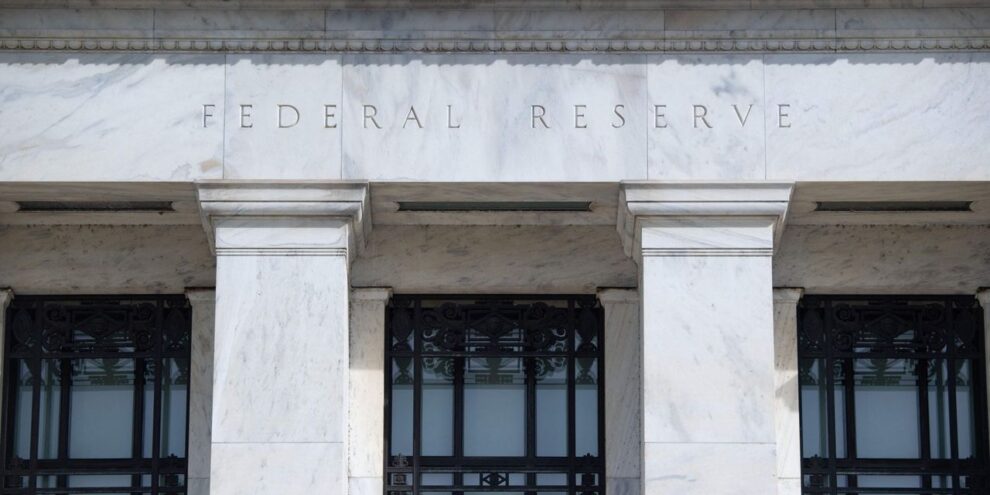
U.S. stocks were suffering a second day of declines on Wednesday, with technology and other growth shares headed for steep losses as investors awaited expected details of the Federal Reserve’s plan to begin shrinking its nearly $9 trillion balance sheet.
What’s happening
- The Dow Jones Industrial Average DJIA, -0.59% fell 238 points, or 0.7%, to 34,402.
- The S&P 500 SPX, -1.16% shed 60 points, or 1.3%, to 4,465.
- The Nasdaq Composite COMP, -2.40% dropped 371 points, or 2.6%, to 13,833.
On Tuesday, the Dow Jones Industrial Average fell 281 points, or 0.8%, while the S&P 500 declined 1.3% and the Nasdaq Composite slumped 2.3%.
What’s driving markets
Expectations that the minutes of the last Fed policy meeting will reveal its plan to reduce the balance sheet were heightened by a speech on Tuesday from Lael Brainard, the Fed governor who’s been nominated to serve as the central bank’s vice chair.
The 10-year Treasury note yield TMUBMUSD10Y, 2.601% is now above the 2-year TMUBMUSD02Y, 2.497%, following a brief period of inversion, as yields rose across the board.
Brainard backed calls for aggressive interest rate increases to bring down inflation, while signaling that the Fed was likely to begin shrinking the balance sheet after its next policy meeting in May.
“I think the shift in tone is notable in the past month or so in terms of what the Fed has said and also from general expectations of the market,” said Matt Stucky, senior portfolio manager at Northwestern Mutual Wealth, by phone.
The outlook now calls for “a pretty rapid balance sheet decline, at least from where we were last time in 2018,” Stucky said, pointing to recent Wall Street estimates for an initial $1.2 trillion to $1.5 trillion reduction, compared with its roughly $600 billion total decrease some four years ago.
Read: Why ‘tough talk’ from a Fed official is rattling stock-market investors
Minutes of the Fed’s March meeting are due at 2 p.m. Eastern and are expected to offer details of the central bank’s plans for its balance sheet.
Rising yields have put pressure on growth stocks, which are more sensitive to interest rates, with the Nasdaq slumping most among major benchmarks.
Technology shares fell again on Wednesday, as investors rotated out of the sector with rising interest rates undermining their valuations. Chipmakers Nvidia NVDA, -6.75% and Marvell Technology MRVL, -3.86% fell further on Wednesday in particular.
Markets have been resilient in the face of consistently more hawkish rhetoric from Fed officials, but “can only take so much — because the more aggressive the Fed becomes, the greater the chances the Fed kills the economy to stop inflation,” said Tom Essay, founder of Sevens Report Research, in a note.
“Fed tightening remains the biggest medium- and long-term risk to stocks, and we were reminded of that yesterday” after Brainard’s remarks, he wrote.
Former New York Fed President Bill Dudley, in a guest column for Bloomberg, wrote policy makers need to “inflict more losses” on stock and bond investors to sufficiently tighten financial conditions and tame inflation.
Meanwhile, Deutsche Bank became the first big Wall Street bank to make a recession call, with its economists forecasting the U.S. and European economies to suffer such a downturn within the next two years.
Ian Shepherdson, chief economist at Pantheon Macroeconomics, said the minutes will show that Fed members are more concerned about inflation now than in January. “We would be surprised if anything in the minutes persuades investors to dial back their expectations,” he adds.
The U.S. and fellow Group of Seven nations and the European Union unveiled new sanctions on Russia on Wednesday, seeking to further punish Moscow for its invasion of Ukraine. The new measures include a ban on all new investment in Russia as well as sanctions on two major banks, Russian President Vladimir Putin’s two adult daughters, and the wife and daughter of Foreign Minister Sergey Lavrov.
Top oil company executives were in the spotlight Wednesday, appearing at a House hearing on gasoline price gouging.
Which companies are in focus
- JetBlue Airways Corp. JBLU, -7.70% late Tuesday pushed its way into merger plans for Spirit Airlines Inc. SAVE, -2.12% and Frontier Group Holdings Inc. ULCC, -6.84%. JetBlue called itself the “most compelling” suitor for Spirit and the most likely to succeed in a low-fare face-off against larger carriers. Spirit shares were down2.2%, while JetBlue shares fell almost 8% and Frontier shares lost 7.2%.
- Shares of Tilray Brands Inc. TLRY, +5.33% rose nearly 4.7% after the Canadian cannabis company posted earnings that topped estimates, though revenues fell sort.
- Twitter Inc. TWTR, +0.43% shares fell 0.5%, but with a weekly gain of almost 30%, after a regulatory filing on Monday revealed that Tesla Inc. TSLA, -5.39% chief and world’s richest man Elon Musk had taken a 9.2% stake in the social-media platform. Musk was subsequently named to Twitter’s board and on Tuesday filed a new disclosure with the Securities and Exchange Commission, admitting that he invested in the company with the goal of effecting change and that his stock purchases began months ago.
What other assets are doing
- The ICE U.S. Dollar Index DXY, +0.07%, a measure of the currency against a basket of six major rivals, rose 0.1%.
- Bitcoin BTCUSD, -4.36% was down 5.3% near $43,700.
- Oil futures turned lower, with the U.S. benchmark CL.1, -3.33% down nearly 2.6% to slip back below $100 a barrel, while gold futures GC00, -0.15% edged down fractionally.
- The Stoxx Europe 600 SXXP, -1.53% fell 1.5%, while London’s FTSE 100 UKX, -0.34% was down 0.3%.
- The Shanghai Composite SHCOMP, +0.02% ended fractionally higher, while the Hang Seng Index HSI, -1.87% fell 1.9% and Japan’s Nikkei 225 NIK, -1.58% dropped 1.6%.
—Steve Goldstein contributed additional reporting






